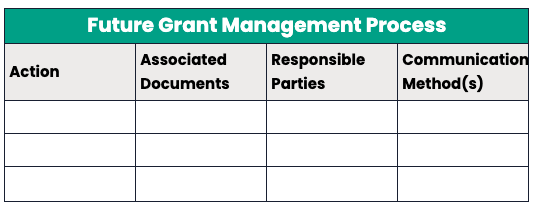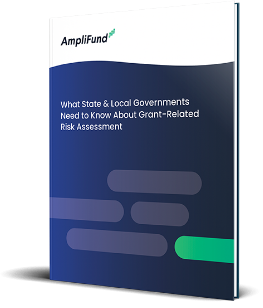With all the compliance and reporting requirements associated with the various types of grant funding sources, it’s easy to become overwhelmed and lose focus of the big picture.
When everyone is focused on compliance and reporting requirements, time for refinement or improvement becomes non-existent.
Left unchecked, situations like this can lead to staff burnout, turnover, and a waste of time and effort. If the funding you award increases, these problems become magnified, and you may not have the time to spend monitoring recipients and subrecipients effectively, which can lead to noncompliance.
We’re here to help you refresh your grants management strategy in 4 simple steps so you can keep funding important projects and have a team that is prepared to manage them.
1. Reassess the Team
Grant making programs across the country are consistently under-resourced. Taking time to make sure you are using your resources wisely and tapping into your team’s full potential will pay dividends.
Take a hard look at your existing team. Assess their strengths and skills to ensure you are making the most of their efforts.
Try making a checklist to document the goals and details about your grants team, including:
- Key team members and their current responsibilities.
- Team members from outside the grant team (programmatic and/or fiscal employees) who are involved in the grant process.
- Responsibilities that still need to be addressed.
- Sites of overlap where responsibilities could be shifted or streamlined.
When you have a clear understanding of who is available, and who you can pull in to help manage tasks, you will be able to see gaps in knowledge or capacity that you can close.
Supportive grants management technology like AmpliFund can create capacity for your team and help you do more with less. With AmpliFund you can:
- Generate reports with the click of a button
- Stay on top of your reporting deadlines with personalized notifications
- Be prepared to tackle compliance requirement changes
- Have more time for the things that matter most.
2. Reassess Internal Controls
Do the processes you’ve implemented work? Do they need to be updated to reflect the reality of your current situation? Conducting an internal “audit” of the effectiveness of your grant management processes will enable your team to be more efficient.
You can employ process mapping to better understand shortcomings and the specific steps to make improvements. From here, tasks can be built out to include the associated documents and deliverables, responsible parties, and methods of communication used at each step.
Based on your current process, use a table like the example below to outline what your refined grant management process should look like in the future. Put a star (*) next to items that will be different from your current process.

Make sure you document all changes made to these processes and keep this information in a centralized location. This will not only save time later but will also keep your funded projects on track in the event of staff turnover, or other unexpected challenges.
If you have a grants management system like AmpliFund, you can automate your internal processes, so they are adhered to consistently.
3. Create an Archive
Do you struggle with finding the data, information, and records needed for performance reporting, subrecipient monitoring, and audits? To effectively monitor program performance, progress, and plan for a successful audit, you need to have documented records of everything throughout the life of the grant.
For example, if your subrecipients have expenditures that were allowable and properly documented but the receipts can’t be located, this could be considered a misuse of funds.
The way to avoid this is by keeping everything related to the grant documented and stored in one centralized location.
AmpliFund is built to store all your program’s data, information, and records in one location for auditing, effective closeout, and monitoring your outcomes. Most importantly, all your data and documentation are directly connected to the award itself and available at the click of a button, so you don’t have to worry about misplacing anything. Additionally, with AmpliFund’s unlimited storage, you never have to worry about running out of room for your grant records.
4. Create Transparency
Does your team understand the full impact your funded programs make? What about the rest of your stakeholders?
Take time to reflect on the ways you can demonstrate that you achieve your program objectives, and that your organization manages funding effectively.
Trust in grant making organizations, institutions, and governments is developed by demonstrating competence and commitment to meeting stated goals. By providing real-time data about program performance, you create an opportunity for stakeholders to see proof of your reliability and efficiency.
But you can’t deliver real-time data on program progress if you don’t have real-time access to the data. AmpliFund’s Reporting Engine pulls data from every field in the system to create impactful reports that you can view with dynamic custom dashboard displays. With AmpliFund, you’re able to tell the full story of your performance to administration, auditors, and the public in an accurate and compelling way and show administration, auditors, or even the public proof of your performance anytime you want.
The most significant effect of refreshing your grants management strategy and creating new structured plans is, quite literally, creating change in the world. By spending time now, you can create more capacity for your team, and expand your grants program.
Your mission is what matters. Let AmpliFund take care of the rest.
Learn more about how AmpliFund helped Catholic Charities USA streamline their grant making program and gain insight into the true scope of their impact.
*Photo by Suphansa Subruayying from Canva.






